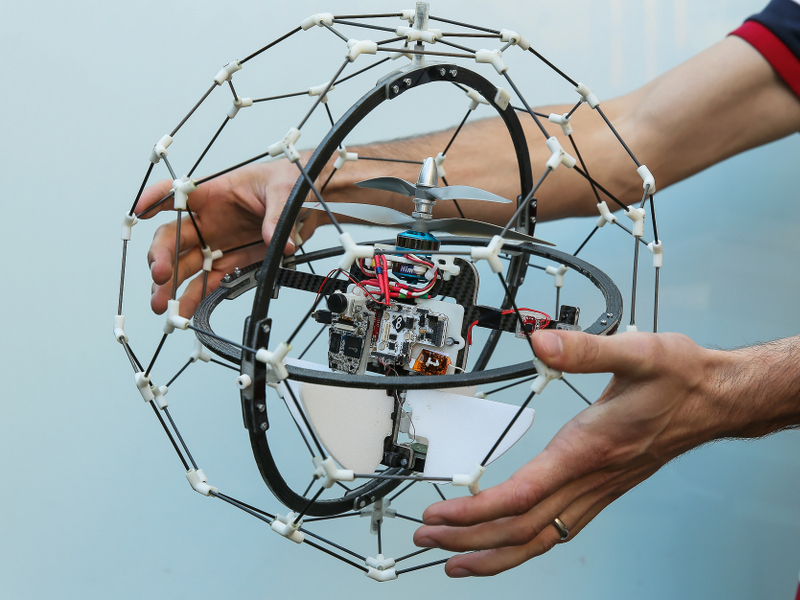GimBall in flight
Flyability’s GimBall drone, which can bash its way into tight, dangerous places, has just won the Drones for Good competition in the UAE.
Earning US$1m in the process, according to Engadget, GimBall – Patrick Thevoz’s creation – is basically a drone contained in an orb-shaped carbon-fibre frame.
The fairly basic, innovative and brilliant engineering behind it means the drone can navigate through the tightest of spaces as the risk of crashing is almost non-existent.
“In disaster situations, every second counts,” said Thevoz, who developed the GimBall to locate victims and assess damage in disaster relief as quickly as possible.
“Drone robots seem to offer the perfect situation to this problem,” he said, before noting that almost all drones can’t be relied on in many disaster situations due to some fairly straightforward concerns.
The problems are two-fold. Firstly, flying robots can’t handle much of a collision. Secondly, people + drones + impact = injury.
The GimBall, however, looks like a whole new kettle of fish. As Thevoz said, it’s the “world’s first collision-tolerant robot, allowing it to fly easily in any place, and safe to fly in contact with humans.”

The engineering on the GimBall. All images via Flyability
The rotating carbon-fibre protective frame is the key defence, while the flight control algorithms keep the robot stable, even after contact.
“In addition to flying it can roll on walls, ceilings or on the ground. In other words, it uses the obstacles to localise itself and find its way,” says Thevoz.
The prize money will help Thevoz and his team greater prepare the GimBall for disaster relief, incorporating the likes of infrared cameras to greater aid in the surveying of major catastrophes.
Other finalists included a drone that could deliver organs for transplant, a tree-planting drone, a robot that monitors crop conditions and a machine that delivers packages, according to Bloomberg.
The whole area of robotics and disaster relief is going through a revolution that’s both amazing and terrifying. Only last week we reported that the US Navy could soon be sending humanoid robots into the battlefield after recent tests proved successful on its firefighting robot.